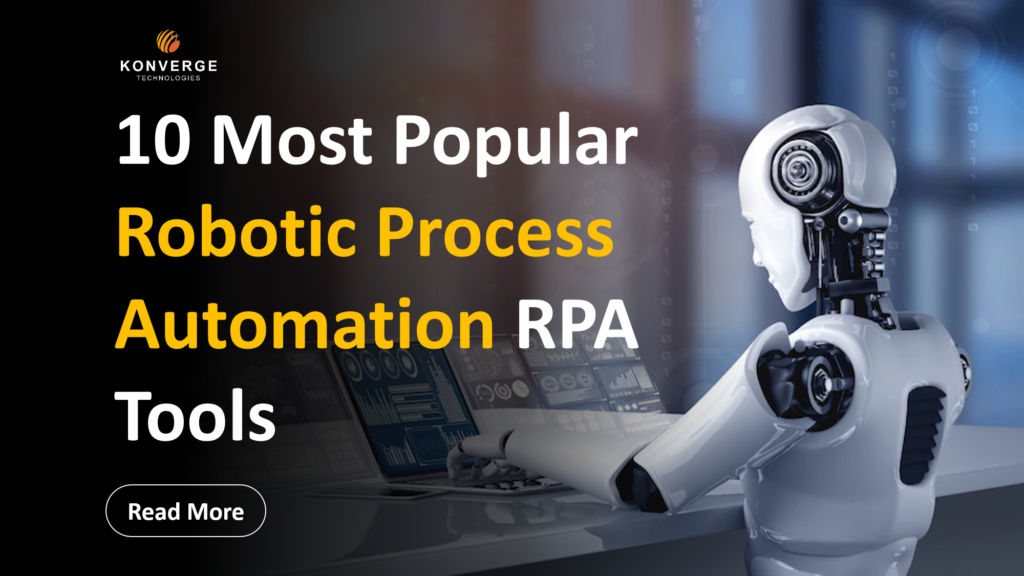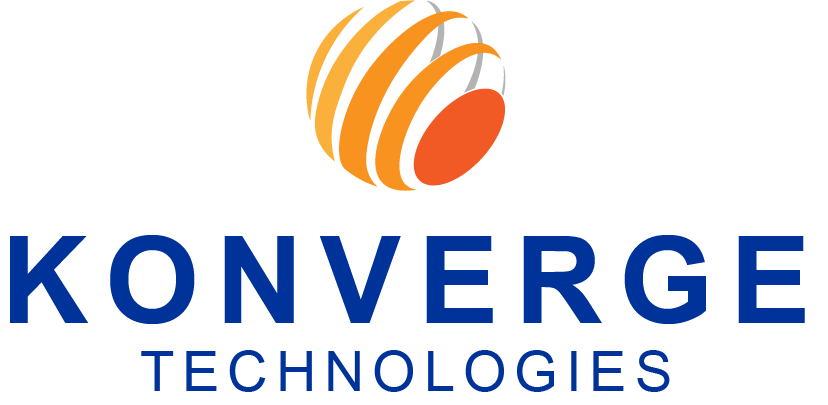
10 Most Popular Robotic Process Automation RPA Tools

10 Most Popular Robotic Process Automation RPA Tools
Robotic Process Automation (RPA) is a technology that involves the use of software robots to automate repetitive, rule-based tasks. RPA tools are becoming increasingly popular in businesses as they offer several advantages, including increased productivity, reduced errors, and cost savings. In this blog post, we will explore the 10 most popular RPA tools that businesses can use to automate their processes.
What is Robotic Process Automation?
Robotic Process Automation is a technology that enables software robots to emulate human actions, such as mouse clicks and keystrokes, to automate repetitive, rule-based tasks. The software robots can interact with various applications and systems, including legacy systems, to execute tasks that were previously performed by humans. This technology has the potential to automate a wide range of processes, including customer service, data entry, and back-office operations.
Types of Robotic Process Automation
Robotic Process Automation (RPA) can be classified into three main types: , namely Attended RPA, Unattended RPA, and Hybrid RPA.
- Attended RPA – In this type of RPA, the software robots work alongside humans to complete tasks. It is often used in call centers, where the robots assist agents by performing repetitive tasks, such as data entry.
- Unattended RPA – In this type of RPA, the software robots work independently to complete tasks without human intervention. It is often used in back-office operations, where the robots can handle repetitive tasks such as data entry, processing invoices, and payroll management.
- Hybrid RPA – This type of RPA combines both Attended and Unattended RPA, where the software robots work alongside humans in some tasks and work independently in others.
How is it Different From A Desktop Application?
- Desktop applications run locally, while RPA tools automate tasks across multiple applications and systems.
- RPA tools emulate human actions, while desktop applications are designed for specific tasks.
- RPA tools act as a layer on top of desktop applications, enabling them to work together seamlessly.
- RPA tools are used for repetitive and time-consuming tasks, while desktop applications are designed for a specific purpose.
- RPA tools can integrate with a wide range of applications and systems, while desktop applications may be limited to specific platforms.
- RPA tools offer advanced features such as cognitive automation and machine learning, which are not available in traditional desktop applications.
Top Robotic Process Automation RPA Tools
There are several RPA tools available in the market, each with its unique features and capabilities. Here are the top 10 RPA tools that businesses can consider:
1. Keysight’s Eggplant: Eggplant is an AI-powered test automation tool that can automate testing for a wide range of applications and devices, including desktops, mobile devices, and web applications.
Pros: Comprehensive testing capabilities, AI-powered automation, cross-platform support.
Cons:Can be expensive, may require advanced technical expertise to use.
2. Inflectra Rapise: Rapise is a user-friendly test automation tool that enables users to create test automation scripts without needing to write code. It features flexible scriptless automation, enabling users to create scripts by recording their actions or by using visual wizards.
Pros: User-friendly interface, flexible scriptless automation, mobile testing capabilities.
Cons: May not be as comprehensive as other RPA tools, limited AI and cognitive automation capabilities.
3. Blue Prism: Blue Prism is a comprehensive process automation tool that can automate a wide range of business processes, including finance, human resources, and customer service. It has strong security features, including end-to-end encryption and user access controls.
Pros:
- Comprehensive automation capabilities for a wide range of business processes.
- Strong security features with end-to-end encryption and user access controls.
- High scalability and flexibility to handle complex automation scenarios.
Cons:
- Expensive licensing costs may be a barrier to entry for smaller organizations.
- Steep learning curve for developers new to the tool, requiring specialized training and certification.
- Limited support for cloud-based automation and integration with third-party cloud services.
3. UiPath
UiPath is a widely-used RPA platform that offers both attended and unattended automation capabilities. It provides a user-friendly interface for designing, deploying, and managing automation workflows. Some of its key features include process recording, integration with popular enterprise applications, and support for multiple programming languages. UiPath also has a large online community and marketplace for users to share and download pre-built automation workflows.
Pros:
- User-friendly interface
- Integration with popular enterprise applications
- Large online community and marketplace
Cons:
- Limited cognitive capabilities
- High learning curve for advanced features
4. Automation Anywhere
Automation Anywhere is a cloud-based RPA platform that offers a range of automation capabilities for businesses of all sizes. It provides a user-friendly interface for designing and deploying automation workflows, as well as advanced features such as natural language processing and machine learning. Automation Anywhere also offers an extensive library of pre-built automation components and a marketplace for users to share and download automation workflows.
Pros:
- Cloud-based platform that provides easy access and scalability for businesses of all sizes.
- User-friendly interface for designing and deploying automation workflows with minimal coding required.
- Advanced capabilities like natural language processing and machine learning for complex automation scenarios.
Cons:
- Expensive pricing model
- Limited support for smaller businesses
5. Pega
Pega is an enterprise-grade RPA platform that offers both attended and unattended automation capabilities. It provides a range of features for designing and deploying automation workflows, including process recording, automated testing, and custom reporting. Pega also offers advanced features such as artificial intelligence and machine learning for more complex automation tasks.
Pros:
- Custom reporting capabilities for monitoring automation performance and identifying areas for improvement.
- Integration with popular enterprise applications like SAP and Salesforce.
Cons:
- High learning curve for advanced features
- Limited online community support
6. Contextor
Contextor is an RPA platform that focuses on automating tasks within desktop applications. It offers a range of features for automating repetitive tasks such as data entry and form filling. Contextor also provides an easy-to-use interface for designing and deploying automation workflows, as well as integration with popular enterprise applications.
Pros:
- Easy-to-use interface for designing automation workflows
- Focus on automating tasks within desktop applications
- Integration with popular enterprise applications
Cons:
- Limited support for more complex automation tasks
- Limited online community support
7. Kofax
Kofax is an RPA platform that offers a range of automation capabilities for businesses of all sizes. It provides an easy-to-use interface for designing and deploying automation workflows, as well as advanced features such as artificial intelligence and machine learning. Kofax also offers integration with popular enterprise applications and a marketplace for users to share and download automation workflows.
Pros:
- Easy-to-use interface for designing automation workflows
- Integration with popular enterprise applications like SAP and Salesforce.
- Marketplace for users to share and download automation workflows, saving time and effort in building new automation workflows.
Cons:
- Limited support for more complex automation tasks
- Expensive pricing model
8. Kryon
Kryon is an RPA platform that offers a range of automation capabilities for businesses of all sizes. It provides an easy-to-use interface for designing and deploying automation workflows, as well as advanced features such as natural language
Pros:
- AI-based automation for complex tasks
- Visual designer for building workflows
- Built-in analytics and monitoring capabilities
Cons:
- Limited support for unstructured data processing
- Pricing may be high for some organizations
9. G1ANT
Pros:
- Open-source platform that provides cost-effective automation solutions for businesses of all sizes.
- Simple syntax for writing automation scripts, making it easy for developers to get started.
- Comprehensive library of pre-built automation components that can be customized and reused.
Cons:
- Limited support for advanced capabilities like natural language processing and machine learning.
- Steep learning curve for beginners who are not familiar with the syntax.
- Lack of a visual interface for designing automation workflows, requiring developers to write code manually.
How to Choose the Right RPA Tools?
Choosing the right RPA tool depends on several factors such as the complexity of the tasks to be automated, the size of the organization, the available budget, and the required features. Here are some key considerations to keep in mind when choosing an RPA tool:
- Task complexity: Consider the complexity of the tasks to be automated and ensure that the RPA tool you choose has the necessary capabilities to handle them.
- Scalability: Ensure that the RPA tool can scale up or down to meet your organization’s changing needs.
- Integration: Ensure that the RPA tool can integrate with your existing applications and systems.
- Ease of use: Consider the ease of use of the RPA tool and ensure that it has a user-friendly interface.
- Pricing: Consider the pricing of the RPA tool and ensure that it fits within your organization’s budget.
Conclusion
Robotic Process Automation is becoming increasingly popular in businesses as it offers several advantages, including increased productivity, reduced errors, and cost savings. The 10 RPA tools listed above are some of the most popular tools available in the market today. When choosing an RPA tool, it’s important to consider factors such as the complexity of the processes to be automated, the level of integration required with existing systems The degree of technical proficiency needed to utilize the tool. With the right RPA tool, businesses can automate their processes and achieve greater efficiency and productivity.



